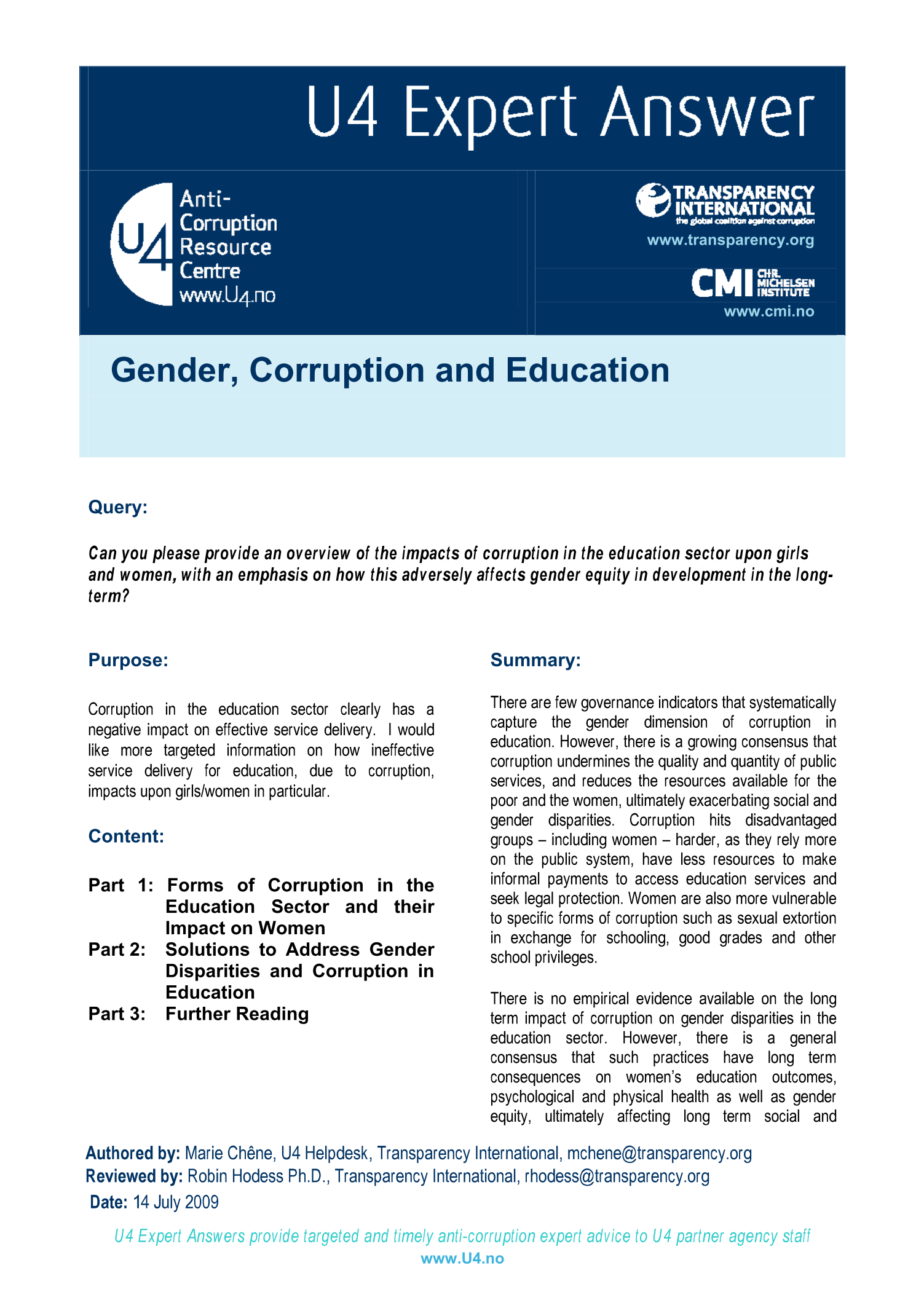U4 Helpdesk Answer
Gender, corruption and education
There are few governance indicators that systematically capture the gender dimension of corruption in education. However, there is a growing consensus that corruption undermines the quality and quantity of public services, and reduces the resources available for the poor and the women, ultimately exacerbating social and gender disparities. Corruption hits disadvantaged groups – including women – harder, as they rely more on the public system, have less resources to make informal payments to access education services and seek legal protection. Women are also more vulnerable to specific forms of corruption such as sexual extortion in exchange for schooling, good grades and other school privileges. There is no empirical evidence available on the long term impact of corruption on gender disparities in the education sector. However, there is a general consensus that such practices have long term consequences on women’s education outcomes, psychological and physical health as well as gend

Cite this publication
Chêne, M. (2009) Gender, corruption and education. Bergen: U4 Anti-Corruption Resource Centre, Chr. Michelsen Institute (U4 Helpdesk Answer Helpdesk)
Disclaimer
All views in this text are the author(s)’, and may differ from the U4 partner agencies’ policies.
This work is licenced under a Creative Commons Attribution-NonCommercial-NoDerivatives 4.0 International licence (CC BY-NC-ND 4.0)

